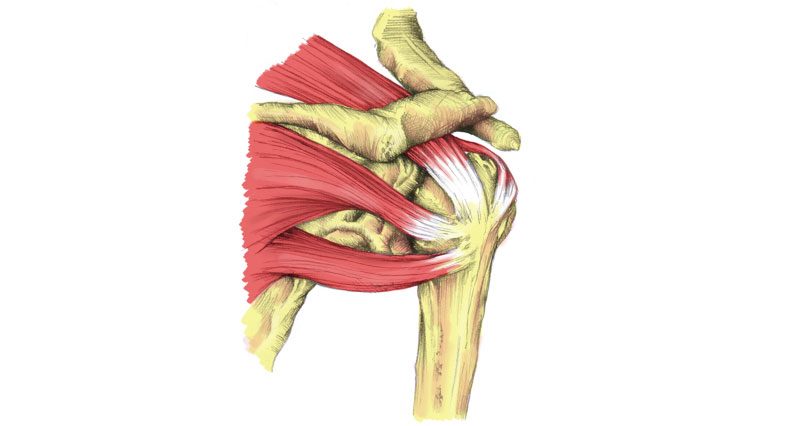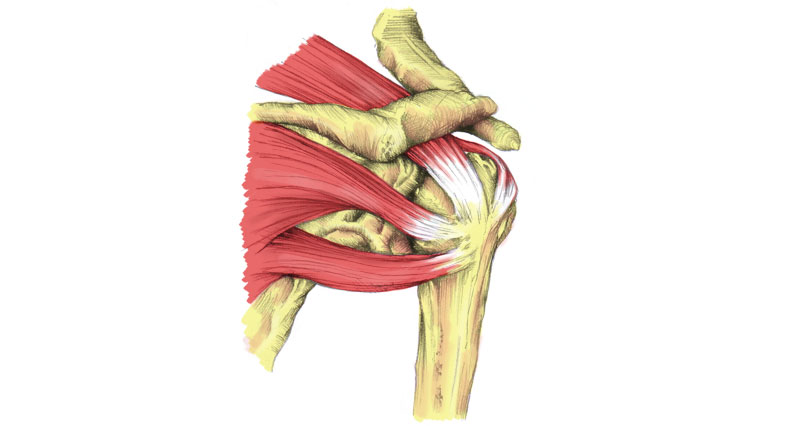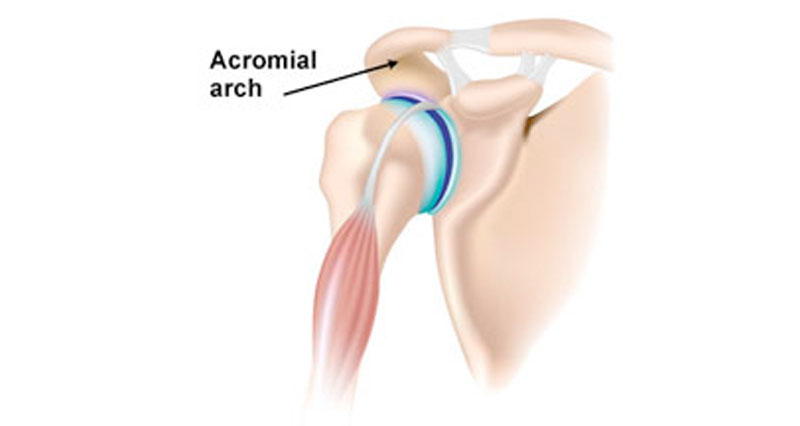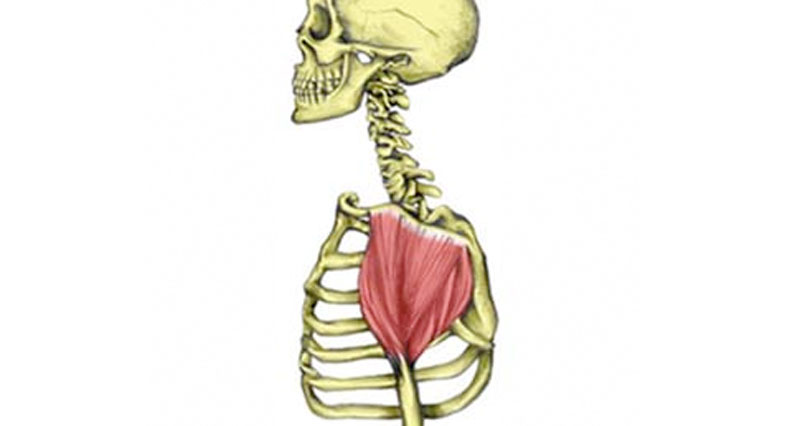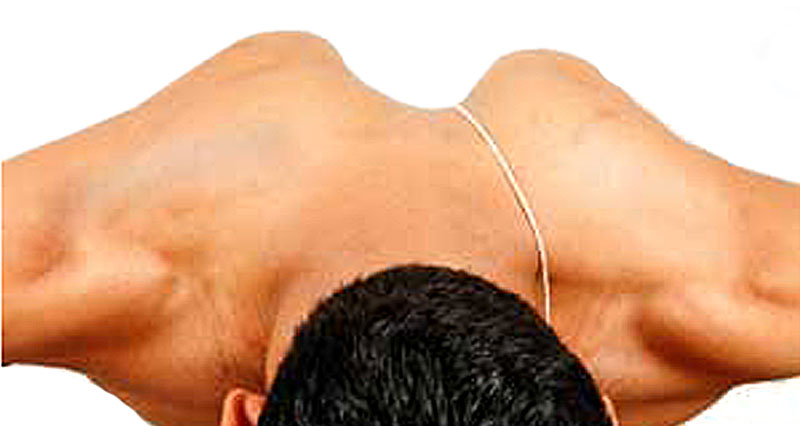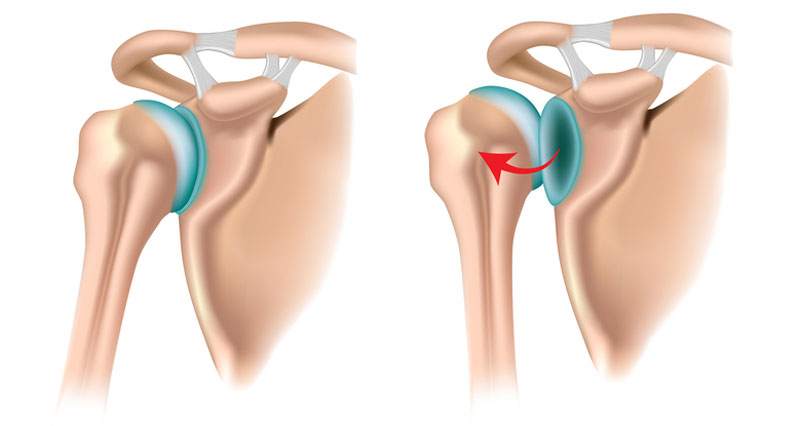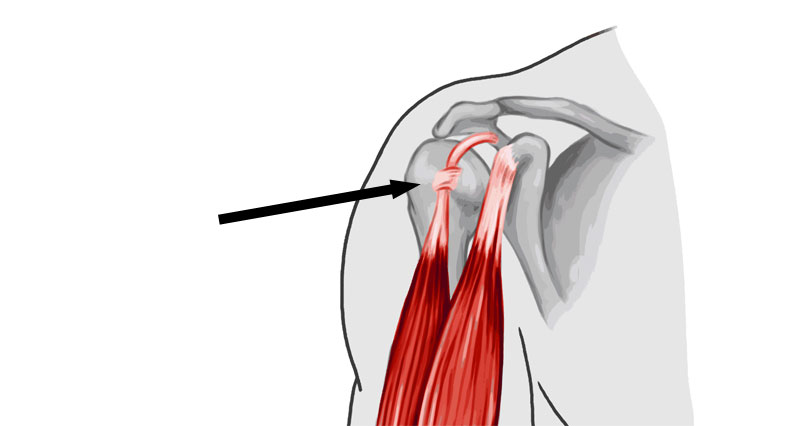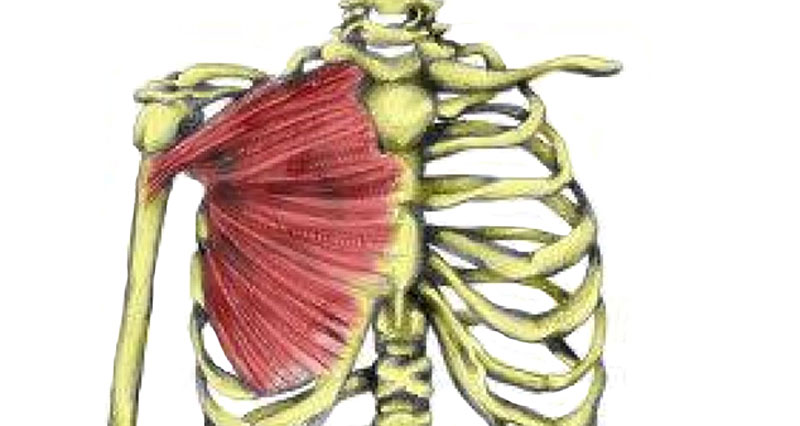A rotator cuff strain is a tear to any of the four rotator cuff muscles in the shoulder. It is common in throwing and racket sports. A torn rotator cuff can range from mild to severe. Here we explain the symptoms, causes, treatment, and exercises.
Symptoms
Torn rotator cuff symptoms at the time of injury will include:
- Sudden pain in the shoulder can range from quite mild to severe.
- It is sometimes accompanied by a feeling that you have torn something in the shoulder.
- Pain may also radiate down into your arm.
- Sometimes a snapping sound may be heard, particularly if the injury is more severe
- You will often be unable to sleep on the injured shoulder as a result of the pain.
- You may also have signs of shoulder impingement. This is where the tendon pinches between the ball and the socket of the shoulder joint, especially when moving your arm overhead.
- Read more on the diagnosis
When should I see a doctor?
- Seek medical attention if your pain persists for more than 2-3 days.
- You are unable to work due to the pain
- Are unable to reach up or to the side with the affected arm after 2-3 days or move the shoulder and arm at all.
What is a rotator cuff strain?
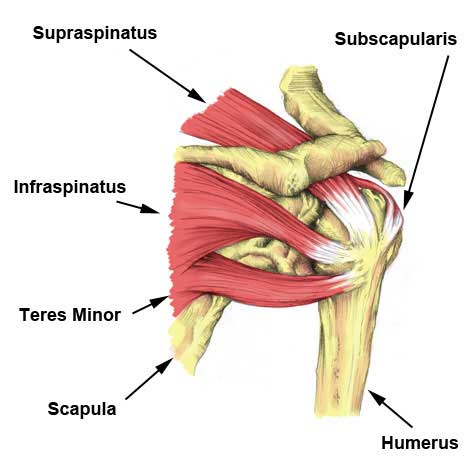
A rotator cuff strain is simply a tear of one of the four rotator cuff muscles found in the shoulder. These are the supraspinatus, infraspinatus, teres minor, and subscapularis. The muscles work together to provide the shoulder joint with dynamic stability. This means they help keep the joint stable while it moves, especially in overhead throwing and racket sports.
The shoulder joint has a very large range of motion (compared to the hip joint) and often needs to move at very high speeds. As a result, there is a higher risk of injury to the muscles and tendons. The supraspinatus and infraspinatus are the most commonly injured rotator cuff muscles, particularly in cricket bowling, pitching in baseball, swimming, and kayaking.
What causes a torn rotator cuff?
Rotator cuff injuries are more common in older athletes, particularly if they have a history of long-term overuse. This causes degeneration of the tendon (wear and tear).
- In throwing events it is often the case that injury is caused by rapid deceleration or stopping of the arm once the throw has been released, rather than the acceleration phase of the throw.
- This is why it is particularly important to strengthen the muscles at the back of your shoulder if you are involved in throwing sports, not just the throwing muscles!
Rotator cuff strain treatment
Treatment for a rotator cuff tear consists of reducing the initial pain and inflammation, allowing the tissues to heel followed by a full rehabilitation program consisting of mobility, stretching, strengthening and functional shoulder exercises.
What can the athlete do?
Essential first aid for a torn rotator cuff muscle or tendon is rest and applying the PRICE principles of protection, rest, ice, compression, and elevation.
Apply ice or a cold therapy compression wrap to reduce pain and swelling. The sooner cold is applied, the sooner you will stop swelling, inflammation, and pain. Therefore, the faster the healing process can begin.
Cold therapy can be applied for 10 minutes every hour reduced to 3 or 4 times a day as pain reduces.
A sling can sometimes be useful for more severe rotator cuff injuries. If you still need to go to work or school it will immobilize your shoulder, but can be removed at night.
Once the acute stage is over mobility and strengthening exercises can begin as long as they are done pain-free.
If your injury is more than a few days old and it has become chronic, then alternating heat and ice may be more beneficial. Heat alone during the later stages of rehabilitation is often advised.
- More on rehabilitation
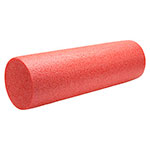
Foam Rollers
What can a Sports Injury professional do?
A doctor may prescribe pain relief and anti-inflammatory medication for a rotator cuff injury.
Imaging studies such as X-rays, MRIs or CT Scans can confirm the diagnosis, and rule out a fracture.
Sometimes you might be referred for a steroid injection directly into the site of injury. This will help reduce any inflammation and allow you to proceed with rehabilitation.
They will prescribe a full rehabilitation program which should include stretching and strengthening exercises.
Shoulder massage including cross-friction massage to the rotator cuff tendon may be applied, particularly in long-term chronic injuries.
Do I need rotator cuff surgery?
If your injury is quite severe, and you are young and active, then surgery may be indicated to repair the tear. People who are more likely to need surgery include:
- Athletes under 60 years old.
- Patients with complete tears of the rotator cuff tendon or muscle.
- If conservative treatment of rest, ice, exercises, and other treatments is not having the desired effect after 6 weeks
- Professional sports people who want the shortcut to making sure the injury heals in the shortest possible time.
- If your job requires constant shoulder use then surgery for a severe injury may be preferable.
Recovery time for a torn rotator cuff will vary depending on several factors. Conservative treatment has a 40-90% success rate at fixing the problem.
Surgery often has good results, with some studies citing a 94% satisfaction rate with surgery, resulting in lasting pain relief and improved function. However, very extensive tears often have a poor surgical outcome. Age is also a factor. If you are older, it will take longer to heal.
Rehabilitation & exercises
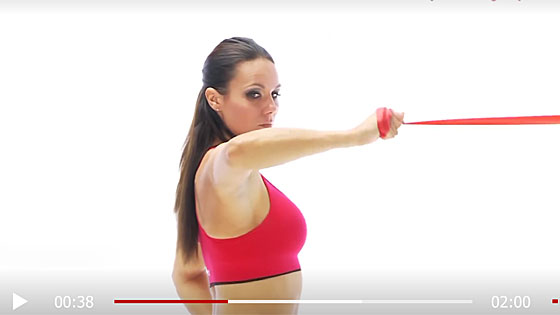
The aim of shoulder rehabilitation exercises is to restore full mobility to the joints strengthen the muscles and restore full function. Mobility, stretching, strengthening, and functional (sports-specific) exercises are important. Exercises should always be done pain-free.
More on rotator cuff strain
References & further reading
- Namdari S, Baldwin K, Ahn A et al. Performance after rotator cuff tear and operative treatment: a case-control study of major league baseball pitchers. J Athl Train 2011;46(3):296–302.
- Kuhn JE, Dunn WR, Sanders R et al. Effectiveness of physical therapy in treating atraumatic full-thickness rotator cuff tears: a multicenter prospective cohort study. J Shoulder Elbow Surg 2013;22(10):1371–9.
- Ainsworth R, Lewis JS. Exercise therapy for the conservative management of full thickness tears of the rotator cuff: a systematic review. Br J Sports Med 2007;41(4):200–10.
- Levy O, Mullett H, Roberts S et al. The role of anterior deltoid re-education in patients with massive irreparable degenerative rotator cuff tears. J Shoulder Elbow Surg 2008;17(6):863–70.
